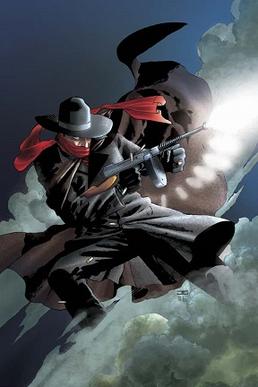
The Shadow is a fictional character published in the United States of America by magazine publishers Street & Smith and writer Walter B. Gibson. Originally created to be a mysterious radio show narrator, and developed into a distinct literary character in 1931 by writer Walter B. Gibson, The Shadow has been adapted into other forms of media, including American comic books, comic strips, serials, video games, and at least five feature films. The radio drama included episodes voiced by Orson Welles.
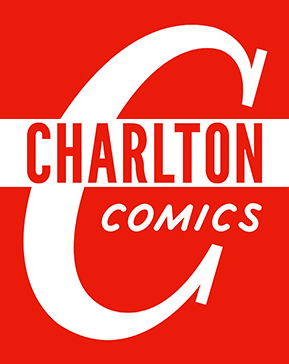
Charlton Comics was an American comic-book publishing company that existed from 1945 to 1986, having begun under a different name: T.W.O. Charles Company, in 1940. It was based in Derby, Connecticut. The comic-book line was a division of Charlton Publications, which published magazines, puzzle books, and briefly, books. It had its own distribution company.

Harvey Comics was an American comic book publisher, founded in New York City by Alfred Harvey in 1941, after buying out the small publisher Brookwood Publications. His brothers, Robert B. and Leon Harvey, joined shortly after. The company soon got into licensed characters, which, by the 1950s, became the bulk of their output. The artist Warren Kremer is closely associated with the publisher.
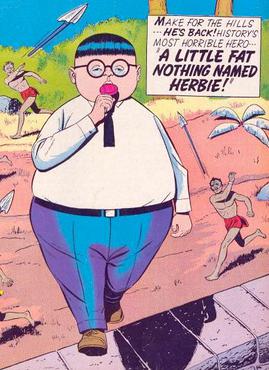
Herbie Popnecker is a fictional comic book character who first appeared in Forbidden Worlds #73 in December 1958, published by American Comics Group. He was created by Richard E. Hughes and Ogden Whitney.
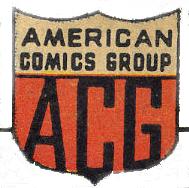
American Comics Group (ACG) was an American comic book publisher started in 1939 and existing under the ACG name from 1943 to 1967. It published the medium's first ongoing horror-comics title, Adventures into the Unknown. ACG's best-known character was the 1960s satirical-humor hero Herbie Popnecker, who starred for a time in Forbidden Worlds. Herbie would later get his own title and be turned into a "superhero" called the Fat Fury.
King Comics, a short-lived comic book imprint of King Features Syndicate, was an attempt by King Features to publish comics of its own characters, rather than through other publishers. A few King Comics titles were picked up from Gold Key Comics. King Features placed former Gold Key editor Bill Harris in charge of the line.
Richard E. Hughes (1909–1974) was an American writer and editor of comic books. He was editor of the American Comics Group through the company's entire existence from 1943 to 1967, and wrote most of that publisher's stories from 1957 to 1967 under a variety of pseudonyms. His best-known character is Herbie Popnecker, created under the pseudonym Shane O'Shea, with artist Ogden Whitney.

Jungle Jim is the fictional hero of a series of jungle adventures in various media. The series began on January 7, 1934, as an American newspaper comic strip chronicling the adventures of Asia-based hunter Jim Bradley, who was nicknamed Jungle Jim. The character also trekked through radio, film, comic book and television adaptations. Notable was a series of films and television episodes in which Johnny Weissmuller portrayed the safari-suit wearing character, after hanging up his Tarzan loincloth. The strip concluded on August 8, 1954.

L. Miller & Son, Ltd. was a British publisher of magazines, comic books, and pulp fiction intended primarily to take advantage of the British ban on importing printed matter. Between 1943 and 1966, the firm published British editions of many American comic books, primarily those of Fawcett Comics. The company is best known for the 1954 creation of Marvelman – a blatant imitation of the Golden Age Captain Marvel – after America's Fawcett Publications capitulated to National Periodicals. L. Miller & Son also published a large line of Western comics — many reprints but also some original titles.
Samuel Joseph Glanzman was an American comics artist and memoirist. Glanzman is best known for his Charlton Comics series Hercules, about the mythological Greek demigod; his autobiographical war stories about his service aboard the U.S.S. Stevens for DC Comics and Marvel Comics; and the Charlton Comics Fightin' Army feature "The Lonely War of Willy Schultz", a Vietnam War-era serial about a German-American U.S. Army captain during World War II.

Standard Comics was a comic book imprint of American publisher Ned Pines, who also published pulp magazines and paperback books. Standard in turn was the parent company of two comic-book lines: Better Publications and Nedor Publishing. Collectors and historians sometimes refer to them collectively as "Standard/Better/Nedor".
Aaron P. "Pat" Boyette was an American broadcasting personality and news producer, and later a comic book artist best known for two decades of work for Charlton Comics, where he co-created the character the Peacemaker. He sometimes used the pen names Sam Swell, Bruce Lovelace, and Alexander Barnes.

Tarzan, a fictional character created by Edgar Rice Burroughs, first appeared in the 1912 novel Tarzan of the Apes, and then in 23 sequels. The character proved immensely popular and quickly made the jump to other media, including comics.

John Ogden Whitney was an American comic-book artist and sometime writer active from the 1930s–1940s Golden Age of comics through the 1960s Silver Age. He is best known as co-creator of the aviator hero Skyman and of the superpowered novelty character Herbie Popnecker and his alter ego, the satiric superhero the Fat Fury. Whitney as well had long runs on characters as diverse as the Western masked crime-fighter the Two-Gun Kid, and the career-girl character Millie the Model.

Forbidden Worlds was a fantasy comic from the American Comics Group, which won the 1964 Alley Award for Best Regularly Published Fantasy Comic. It published 145 issues between July/August 1951 to August 1967.
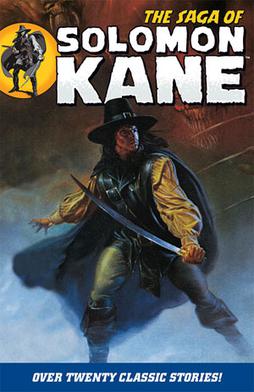
Solomon Kane is a fictional character featured in several comics published by Marvel Comics between 1973 and 1994. He was originally created by the pulp-era writer Robert E. Howard. Dark Horse Comics began publishing a new series of Kane stories in 2008, and also published collections of the 1970s Marvel stories in 2009.

The Savage Sword of Conan was a black-and-white magazine-format comic book series published beginning in 1974 by Curtis Magazines, an imprint of American company Marvel Comics, and then later by Marvel itself. Savage Sword of Conan starred Robert E. Howard's most famous creation, Conan the Barbarian, and has the distinction of being the longest-surviving title of the short-lived Curtis imprint.
Alan Class Comics was a British comics publishing company that operated between 1959 and 1989. The company produced anthology titles, reprinting comics stories from many U.S. publishers of the 1940s to 1960s in a black and white digest size format for a UK audience. During the 1960s and 1970s, these reprints were the main medium through which British children were introduced to American monster and mystery comics, as well as most non-DC or Marvel superheroes.

Western comics is a comics genre usually depicting the American Old West frontier and typically set during the late nineteenth century. The term is generally associated with an American comic books genre published from the late 1940s through the 1950s. Western comics of the period typically featured dramatic scripts about cowboys, gunfighters, lawmen, bounty hunters, outlaws, and Native Americans. Accompanying artwork depicted a rural America populated with such iconic images as guns, cowboy hats, vests, horses, saloons, ranches, and deserts, contemporaneous with the setting.

Atlas Publications was an Australian publishing company which operated from 1948 until 1958 and was based in Clifton Hill, a suburb of Melbourne. It published magazines and popular fiction, and the genre for which it was best known, adventure comics. It had no relation to the American company Atlas Comics which was active in the same period.














